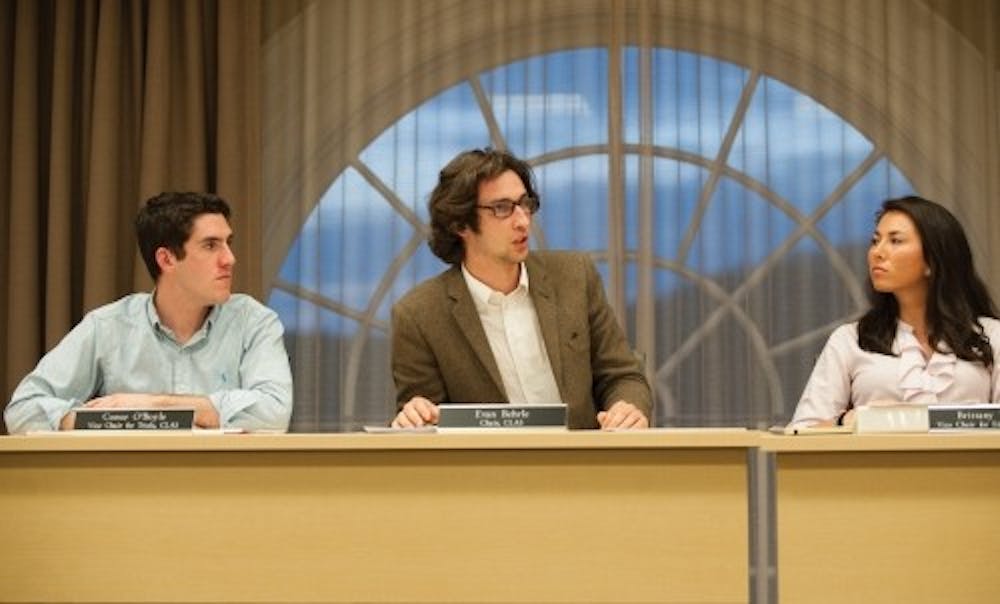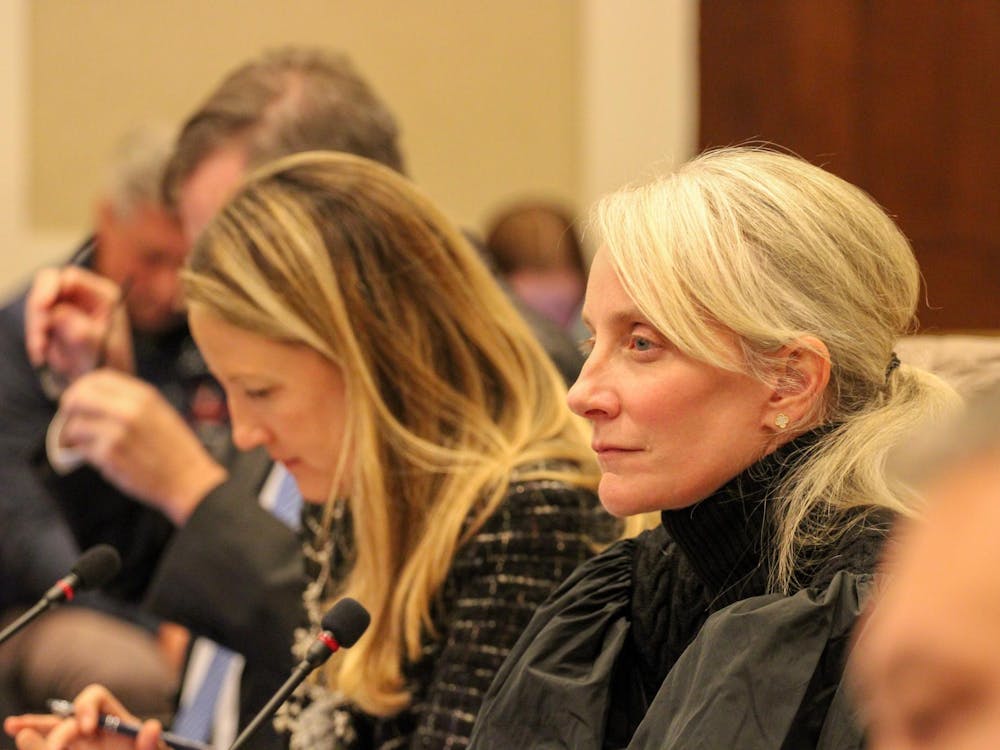Honor at the University of Virginia has been anything but a static institution since its inception in the 1840s. Public opinion of the system has wavered through countless controversies, several of which challenged its very existence.
With those challenges have come several important structural reforms, which have in turn changed the face of honor at the University. Though it’s often discussed as an immutable, defining aspect of Thomas Jefferson’s University, the “honor system has been in a state of constant evolution and change ever since it was instituted,” University historian Sandy Gilliam said. And there is no reason to believe that evolution and change will come to a halt anytime soon, he said.
Today’s article on the honor system’s past is the first installment of a three-part series examining the institution’s past, present and future.
The Honor Committee:
In keeping with the University’s ideal of student self governance, the honor system is inherently democratic. The student-run Honor Committee oversees the system, and changes to its structure come from within the student body and reflect the beliefs and opinions of the students currently in attendance.
The Committee is currently comprised of 27 elected representatives hailing from all of the University’s various schools. It is responsible for investigating accused students, providing counsel for those accused, conducting trials, educating the public about the honor system and assuring the maintenance of the system from year to year, according to its website.
Gilliam said when he was a student at the University, the Committee was much smaller, composed of the presidents of the respective schools, with the president of the College acting as chair.
“The size [of the University] makes the purpose of the honor system more difficult to fulfill because you’re trying to foster a sense of trust and a sense of community, and that is [harder] the larger that community is,” said Committee Chair Evan Behrle, a fourth-year College student. “We are trying to bring everybody on the same page … and it is more difficult to forge and steward a shared vision when the people who might hold a vision come from vastly different [backgrounds].”
In 1977, the first written constitution for the Committee was ratified by the student body. Since then, there have been several challenges to the laws and efficacy of the system.
That same year, The Cavalier Daily challenged the Committee’s rule prohibiting students accused of honor offenses from talking to the public about the trial. On July 14, The Cavalier Daily published an editorial arguing the honor system was violating students’ U.S. Constitutional rights.
“Students who oppose the way the panel handles trials are silenced,” the editorial reads. “Students who believe the Committee has mishandled a student’s rights are silenced.”
Today, accused students can opt for a public trial or a private trial. If students opt for a private trial, anyone associated with the proceedings must remain silent on all issues significantly relevant to the proceedings, and those who violate this confidentiality are subject to University Judiciary Council sanctions.
The composition of honor trial juries has also been contentious in the past half century, developing from all elected representatives to today’s current mix. In 1980, a referendum passed that allowed accused students to select a jury comprised of elected representatives and randomly selected peers. In 1990, accused students were further given the right to select a jury exclusively comprised of randomly selected peers.
The investigation process has also changed dramatically. In 1993, the Committee ratified a change to permit only Committee members to investigate cases. Previously, any student could gather evidence against another student and present it to the Committee.
“The reason we have formalized and delineated roles is it takes a tremendous amount of training,” Behrle said. “[It is] just like you couldn’t have any random student give a tour of the University, and the stakes are even higher in the Honor Committee.”
Leniency & Polynice Case:
As the student body has expanded and various reforms took aspects of the honor system out of the hands of the students, the system started garnering critiques of being too lenient — despite its well-known single sanction system.
In the 1970s, the Committee introduced the conscientious retraction, which allowed students to admit to an honor offense before any other community members suspected them of the offense. Students who file a conscientious retraction with the Committee can forgo a trial and investigation, but are left to deal with the consequences of their actions at the University outside the Committee’s jurisdiction.
“I think certainly you can look at the advent of the conscientious retraction … as measures of leniency, and I think [it was],” Behrle said. “[But it is an act] of leniency where you want acts of leniency [due to] integrity represented by students.”
But questions of unmerited leniency expand far beyond the institutionalized aspects of the Committee. This debate came to a peak when Virginia basketball star Olden Polynice was acquitted of plagiarizing charges in 1984, despite admitting his guilt.
Widespread accusations that Polynice was given special treatment due to his status on the basketball team emerged after his acquittal. According to a Sports Illustrated article, then-head coach Terry Holland said to the Committee that Polynice, “confused loyalty to the basketball team with loyalty to the university.”
Polynice went on to have a successful professional basketball career both in Italy and in the NBA.
The Polynice case also highlighted the interaction of race with the honor system — the star center was a Haitian-American. In the late 1980s, as the student body became more diverse, perceptions arose that honor trials were targeted at minority students. A 1988 Cavalier Daily report showed that, “statistics for the last year show that 29.7 percent of honor accusations are made against black students, a number which is disproportionately higher than the approximately 8 percent of” the student body that was made up of African-Americans.
The Christopher Leggett case:
Perhaps the biggest threat to the honor system came in 1994, when a controversial case threatened its very existence.
On July 30, 1994, University student Christopher Leggett was found not guilty in a retrial on charges that he cheated on a computer science exam, two years after originally being found guilty.
The University and the Board of Visitors asked that the Committee hear Leggett’s petition for appeal and follow proper procedure, Gilliam said. If they did not, Leggett’s case would have gone to the courts, and the Board was sure the honor system would be abolished.
“The judge would rule that it’s wrong to leave a matter of such importance in the hands of a bunch of students,” Gilliam said.
The reversal was widely disputed by students and Committee members who felt the University and honor’s executive Committee acted inappropriately. Nathan Vitan, a member of the Committee, said that Leggett received special treatment.
“It’s obvious that Chris Leggett was an affluent white male,” he said in an August 1994 Cavalier Daily interview, implying that was one of the reasons he was acquitted.
Details emerged that the University secretly paid for $40,000 in legal fees surrounding the case and that executive Committee members ignored a vote by the whole Committee in its decision to grant Leggett a second trial.
There were many in the University community who believed that the University pressured Committee members to settle the case in Leggett’s favor. A September 1994 editorial by The Cavalier Daily even called for University General Counsel James Mingle to resign.
Additionally, attempts were made to impeach executive Committee members. Finally, after a long silence, University President John T. Casteen III defended the actions of the University and the executive Committee.
Debateable progress
Every change to the system generates debate from undergraduates, graduates, alumni and faculty alike about how the system should function and adapt. Every one of these debates struggle with the inherent conflict between treating students fairly while maintaining the integrity of the tradition.
“It’s clear that every major change that has taken place in the system has provided additional protection for the accused.” said Ernest Ern, a former vice president of student affairs, in a 1992 interview commemorating the 150th anniversary of the honor system. “We spend so much time as a community as a community discussing procedural modifications and we spend so little time talking about the concept of honor.”
Indeed, there is a widespread conception that the significance of honor and the respect for the tradition has diminished over the years. But Behrle said the historic changes have simply made honor more relevant.
“When the honor system was created, it was created by and for a tiny group of southern, wealthy, white, gentlemen farmers,” Behrle said. “It is very easy to have an honor system for a group of men who have been hearing about the same conception of Honor for their entire lives.”
Gilliam believes, despite having to weather several storms, the honor system has and will remain the thriving institution he knew when he first came to the University as an undergraduate in the 1950s.
“It’s alive and functioning,” he said.







